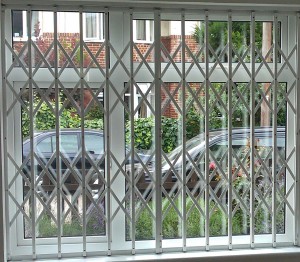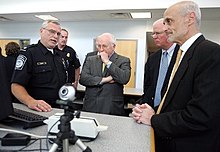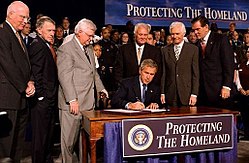The
PF5000S Manual raise arm barrier is a low maintenance cost effective
way of manually controlling access to unauthorised areas. These
commercial barriers are also known as Counter Balance Gates.
The standard PF5000S barrier covers road ways spanning up to 7.0 metres. Pivot assembly made of steel box section, zinc plated shaft pivoting on two heavy duty stainless steel bearing blocks. When the arm is down, there is no vehicle that is going to attempt to get by without causing serious damage to itself.

The aluminium arm is finished with either alternate red and white or alternate yellow and black vinyl hatching, but other colours are available to suit your needs.
The design of the PF5000S also comes with a spring loaded locking mechanism, which allows you to fix the barrier in the raised and lowered position prior to applying the padlock. It also incorporates a counter balanced fish tail weight which is fine tuned for ease of operation.
If one barrier isn’t enough for your security needs, consider a dual raised arm barrier. These solid and secure barriers are available with a central locking mechanism to suit wider spans, depending on the size of the area you need to cover. The PF5000S comes complete with a lock-able end rest, padlock and keys. No mounting plate is required as M16 anchor shield bolts are also included.
Our raised arm barriers can be custom designed to suit your company, with a variety of colour schemes available. The standard colours are Red, White or Yellow/Black, but if you fancy trying something different, or your company has particular colours associated with it, we will be more than happy to oblige your needs.

The standard PF5000S barrier covers road ways spanning up to 7.0 metres. Pivot assembly made of steel box section, zinc plated shaft pivoting on two heavy duty stainless steel bearing blocks. When the arm is down, there is no vehicle that is going to attempt to get by without causing serious damage to itself.

The aluminium arm is finished with either alternate red and white or alternate yellow and black vinyl hatching, but other colours are available to suit your needs.
The design of the PF5000S also comes with a spring loaded locking mechanism, which allows you to fix the barrier in the raised and lowered position prior to applying the padlock. It also incorporates a counter balanced fish tail weight which is fine tuned for ease of operation.
If one barrier isn’t enough for your security needs, consider a dual raised arm barrier. These solid and secure barriers are available with a central locking mechanism to suit wider spans, depending on the size of the area you need to cover. The PF5000S comes complete with a lock-able end rest, padlock and keys. No mounting plate is required as M16 anchor shield bolts are also included.
Our raised arm barriers can be custom designed to suit your company, with a variety of colour schemes available. The standard colours are Red, White or Yellow/Black, but if you fancy trying something different, or your company has particular colours associated with it, we will be more than happy to oblige your needs.
















